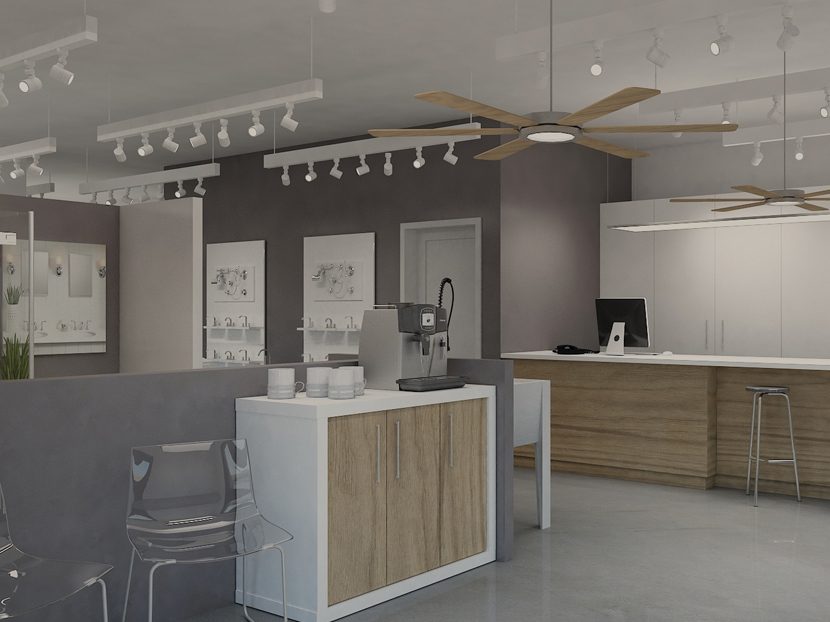It’s Time to Stop Reacting and Start Planning
Gather client data, keep an eye on the state of the industry and empower staff with the information they need to make sales.

For months now, retailers in all industries have adjusted to significant changes in consumer habits. As if the constant up and down on the client side isn’t enough, everyone is dealing with supply chain disruptions, evolving health and safety protocols, staffing issues — and some days, just keeping the lights on. With so much stress and uncertainty, how do you know what to do next?
Arm yourself with as much data and knowledge as possible. Now that we know the COVID-19 pandemic will have far-reaching effects on society and the economy, it’s time to stop reacting and start planning. Gathering client data, keeping an eye on the state of the industry and empowering staff with the information they need to make sales online or offline are a few of the ways to feel a little less shaky in these choppy waters.
Knowledge is power. This is true on the best of days and has never been truer than right now.
Researchers have been scrambling to track and analyze how people are shopping online and in-store. From one point of view, changing the way you sell or market to clients based on trends (especially such new ones) can lead to unsustainable sales practices. On the other hand, there’s no doubt some trends may be long-term solutions that will improve customer service and sales long after the pandemic is over.
Strengthen Customer Relationships
What’s new for consumers? People are more mindful about their spending: They are researching before buying and purchasing less expensive products. Supply chain disruptions have led people to explore different options when they can’t find what they want — meaning they are open to trying new brands and stores.
That’s the researchers’ consensus, and while general knowledge is handy, it’s time to dig deeper. The reality can vary state by state, city by city, and be completely different in showrooms serving urban versus rural clients.
This means talking to your clients using whatever channels you have at your disposal. It can be as simple as sending out a survey via email, asking where your clients are in their home updating or renovating journeys. Find out what products are on the top of their minds; Houzz and other leading industry publications note that consumers are demanding touchless technology in their kitchens, bathrooms and mudrooms.
These are the first questions to ask; the answers can lead to better financial and inventory planning. Beyond that, speaking with clients will keep their trust in your brand strong. Even if the in-store experience is not the focus right now, the more you know about your clients and show you care about their needs, the easier it will be to recover that experience in the future.
In the current climate, strengthening the customer relationship is just as important as watching the bottom line. Showroom salespeople have an excellent opportunity to interact with their clients in a truly profound way.
A Robust Ecommerce Site
Expectations have enormously changed, on both sides of the retail relationship, so how can a showroom demonstrate what clients can expect from their local decorative plumbing store? One thing consumers are looking for is a robust online presence from their local stores. It’s been said many times over the past few months, but an omnichannel experience is critical right now.
Keep in mind this is more of an opportunity than anything else; people are staying home more than they have in years, in the exact place the products you sell are ultimately going to be used. Use your website and social media to encourage clients to get those projects done and assure them you have exactly what they need to achieve the rooms of their dreams.
While you have their attention online, be the source of expertise your clients need. Chats and emails are great ways to connect right now.
Know your online offering inside-out so you can help people research better instead of just sending them to a website and letting them get lost in the options. By optimizing the online presence, especially for the pre-shopping research phase, showrooms get in on the first stage of the buying journey.
When a client searches for a product and the first website up is their local showroom, it demonstrates authority, inspires confidence and leads them to that establishment when they are ready to make their final decision.
Double-Down on BOPIS
It’s been noted almost universally that in the current situation, supply chains have been disrupted and stock shortages have become a significant issue online and offline. Consumers are aware of this, but it doesn’t mean it doesn’t frustrate them.
What can you do to ease the friction? It’s not always possible to keep every single online or in-store product in stock, but at the least, offer to ship out-of-stock products directly to their homes for free, if that’s what it takes to get the sale.
It is definitely time to have many options at the ready, at several price points. Additionally, if shoppers are more committed to purchasing, it’s a chance to present durable, quality products they will not be able to get anywhere else.
Once they’re buying, keep your BOPIS (buy online, pick up in store) game strong. There’s no reason not to create a great experience even if clients are only stopping by to pick something up. A table with a bottle of hand sanitizer and a payment terminal leaves a lot to be desired. Considering this may be the situation for a while to come, why not create an exceptional pickup area?
A fully branded counter attached to a reception area or put elsewhere in the showroom offers clients a place to speak to someone about their newly purchased products. Even though many people are shopping more or less as usual, there are still some who are not comfortable coming into your showroom. This might be the case for months or years to come, so a separate pickup/consultation area could be a good medium-term investment.
There’s plenty of research to help us adapt to pandemic selling and shopping. But we know what really matters in the kitchen and bath showroom world: turning everything into an opportunity to succeed. Even if things seem challenging right now, decorative plumbing showrooms have always been in it for the long haul. The industry has seen many challenges over the years and weathered them all; this pandemic is no exception.





